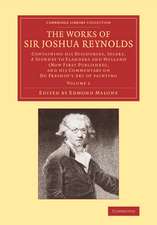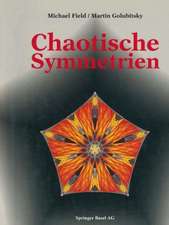Art in Mind: How Contemporary Images Shape Thought
Autor Ernst van Alphenen Limba Engleză Paperback – 19 mai 2005
Art has the power to affect our thinking, changing not only the way we view and interact with the world but also how we create it. In Art in Mind, Ernst van Alphen probes this idea of art as a commanding force with the capacity to shape our intellect and intervene in our lives. Rather than interpreting art as merely a reflection of our social experience or a product of history, van Alphen here argues that art is a historical agent, or a cultural creator, that propels thought and experience forward.
Examining a broad range of works, van Alphen—a renowned art historian and cultural theorist—demonstrates how art serves a socially constructive function by actually experimenting with the parameters of thought. Employing work from artists as diverse as Picasso, Watteau, Francis Bacon, Marlene Dumas, and Matthew Barney, he shows how art confronts its viewers with the "pain points" of cultural experience-genocide, sexuality, diaspora, and transcultural identity-and thereby transforms the ways in which human existence is conceived. Van Alphen analyzes how art visually "thinks" about these difficult cultural issues, tapping into an understudied interpretation of art as the realm where ideas and values are actively created, given form, and mobilized. In this way, van Alphen's book is a work of art in itself as it educates us in a new mode of thought that will forge equally new approaches and responses to the world.
Examining a broad range of works, van Alphen—a renowned art historian and cultural theorist—demonstrates how art serves a socially constructive function by actually experimenting with the parameters of thought. Employing work from artists as diverse as Picasso, Watteau, Francis Bacon, Marlene Dumas, and Matthew Barney, he shows how art confronts its viewers with the "pain points" of cultural experience-genocide, sexuality, diaspora, and transcultural identity-and thereby transforms the ways in which human existence is conceived. Van Alphen analyzes how art visually "thinks" about these difficult cultural issues, tapping into an understudied interpretation of art as the realm where ideas and values are actively created, given form, and mobilized. In this way, van Alphen's book is a work of art in itself as it educates us in a new mode of thought that will forge equally new approaches and responses to the world.
Preț: 327.12 lei
Nou
Puncte Express: 491
Preț estimativ în valută:
62.60€ • 65.12$ • 51.68£
62.60€ • 65.12$ • 51.68£
Carte tipărită la comandă
Livrare economică 12-26 aprilie
Preluare comenzi: 021 569.72.76
Specificații
ISBN-13: 9780226015293
ISBN-10: 0226015297
Pagini: 224
Ilustrații: 72 halftones
Dimensiuni: 178 x 254 x 15 mm
Greutate: 0.63 kg
Ediția:1
Editura: University of Chicago Press
Colecția University of Chicago Press
ISBN-10: 0226015297
Pagini: 224
Ilustrații: 72 halftones
Dimensiuni: 178 x 254 x 15 mm
Greutate: 0.63 kg
Ediția:1
Editura: University of Chicago Press
Colecția University of Chicago Press
Notă biografică
Ernst van Alphen is the Queen Beatrix Professor of Dutch Studies and professor of rhetoric at the University of California, Berkeley, as well as professor of literary studies at the University of Leiden. He is the author of numerous books, most recently Armando: Shaping Memory; Caught by History: Holocaust Effects in Contemporary Art, Literature, and Theory; and Francis Bacon and the Loss of Self.
Cuprins
List of Illustrations
Acknowledgments
Introduction
1 Thinking about Art in History
Part 1: Exposing History
2 The Portrait's Dispersal
3 Shooting Images, Throwing Shadows
4 The Representation of Space and the Space of Representation
Part 2: Rewriting History
5 The Homosocial Gaze
6 Men without Balls
7 Facing Defacement
Part 3: Working Through History
8 Caught by Images
9 Playing the Holocaust
Notes
Bibliography
Index
Acknowledgments
Introduction
1 Thinking about Art in History
Part 1: Exposing History
2 The Portrait's Dispersal
3 Shooting Images, Throwing Shadows
4 The Representation of Space and the Space of Representation
Part 2: Rewriting History
5 The Homosocial Gaze
6 Men without Balls
7 Facing Defacement
Part 3: Working Through History
8 Caught by Images
9 Playing the Holocaust
Notes
Bibliography
Index
















